Aren’t You Just {Dyeing} to Know!?
I think every yarn crafter has a craving to learn more about the yarn we’re so obsessed with…..
How in the world does that crazy, wiry looking llama fur turn into the awesome, soft stuff I’m working with right now? How did the magical colors I’m currently knitting an adorable baby outfit with come into existence!? How do all the different textures I enjoy stitching come to be?
If you’re anything like me, then you’ve probably asked yourself these questions at one point or another. So I decided to go on a quest for answers. I made it my mission to talk to one of the BEST handspun yarn artists I know, and guess what!? She holds all the knowledge. This magical lady, Karla, creates the savory yarns that we all drool over daily…..to say I’m envious of her abilities would be a massive understatement!
In case you haven’t had your quota of yarnie eye-candy for the day, you can check out Karla’s shop, The Gingko Leaf, to get your fill. She was so sweet to take the time to answer all my questions and to provide all of these awesome photos for us!
Karla walked me through her process step-by-step….she even went as far as to show me some behind-the-scenes photos of the shearing process….what was she shearing you ask? Her sweet little llama (ok…not so little, but definitely sweet) Truffles! Check out the transition from animal fur to spin-able fiber here.
Then she walked me through the dyeing process….which was amazing! I do have to admit that I have a tiny bit of experience with dyeing and spinning yarn myself…..however I still totally stink at it (boo!) and I’ve never seen it done anything like the way Karla does it. Since I’ve used her yarn regularly, I always wondered how she managed to get such consistent colors, and how she avoided EVER having a white spot left in her yarn. The process is SO neat! Here’s what Karla had to say about it:
Although I often microwave dye or kettle dye fibers and yarns, in the summer I love to use my solar dyepot. When my children were little they were fascinated by solar ovens. We put together a baking oven out of a pizza box that really did bake cookies. We built a somewhat more elaborate oven to cook rice and make soup. Although it has been years since we cooked in a solar oven, I never quite forgot the joy of using the sun’s energy. I put my solar dyepot together out of odds and ends I had in the garage using the same principles as a solar oven. It really works and offers a sustainable way for me to dye a lot of wool the same color (or colors) all at once.
Did you have any idea that un-spun wool comes in a super long, off-white, snakey looking ball? Before I started spinning myself, I had no idea! This photo shows Karla measuring out some gorgeous Australian Merino Wool.
The wool is then pre-soaked to prepare it for dyeing, and carefully laid out in Karla’s amazing solar dyepot.
She then starts mixing colors, and putting them across the wool in stripes.
After she’s finished pouring the dye, she squishes it all together to make sure those pesky white spots (that were so prevalent in my amateur yarns!) stay away.
She then covers the solar dyepot, and the yarn is ready to cook!
The wool will spend a long hot day on my patio, slowly simmering. It then sits overnight cooling off. The next morning, I will open it up and check to make sure all of the dye was completely absorbed by the wool.
After the yarn dries, Karla works her magic on a spinning wheel similar to this one….I had no idea what a spinning wheel even looked like before I started spinning here and there, so I thought it was important to share a photo of my wheel.
And suddenly, where only fiber used to exist, yarn has been created! I love this photo showing the finished yarn right next to the dyed wool.
Since Karla is pretty much “The Keeper of the Yarn” in my eyes, I asked her a few more questions about how she got started creating these gorgeous yarns.
Yarn has been a part of my life since earliest childhood. My grandmother loved to weave and I grew up surrounded by her baskets of yarn and looms. She and I shared a passion for fiber, weaving and farming.
My grandmother belonged to a local Weaver’s Guild. They often had interesting workshops that the members took turns teaching and that was where I first learned to spin yarn on a drop spindle. I soon discovered I had no interest- and no aptitude whatsoever- for spinning. My hands, which felt so quick and small when threading a loom, suddenly became clumsy when spinning. The best I could produce was an awful lumpy yarn that stubbornly wrapped up around itself. I set aside my grandmother’s drop spindle as quickly as I could and didn’t spin again until many years later when I was in graduate school working toward a Masters degree in Fiber Arts.
The process of creating yarn from fiber can take weeks or it can take an afternoon, depending on the fiber. For example, I recently sheared my llama, Truffles. After shearing, I needed to hand pick my way through her wool, pulling out hay seeds and coarse hairs. After picking, the wool needed to be washed several times. Then it went through carding, a process that aligns the fibers so that it is ready to spin. All of that before spinning! There are quicker ways to get fiber on the spinning wheel, though. Not all of us have the space or interest in raising our own fiber animals and it is fun -and addictive- to buy fiber. Fiber can be purchased already dyed and ready to spin. There are many talented folks on Etsy.com and elsewhere who prepare beautiful fibers for spinners.
I dye fibers almost daily, sometimes for a specific project but often just to build up a color palette that I can use either as is or to blend with other colors and fibers. Although I usually use professional dyes, I sometimes harvest plants from our farm to create botanical dyes.
After I have prepared and dyed my fibers, I begin thinking about how they might work together. I keep bins in my studio for silk, locks and sparkly additions. I also have a large rack full of hand dyed wool and alpaca. Sometimes I blend colors and textures together using a carder. Sometimes I dye a colorway like the one in my solar dyepot that I spin up by itself.
Making yarn is truly a passion and a joy.
Did you love watching Karla at work!? Please leave a comment and let her know <3

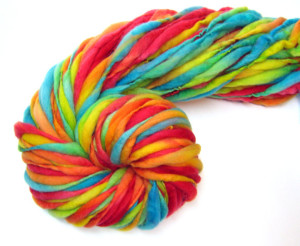

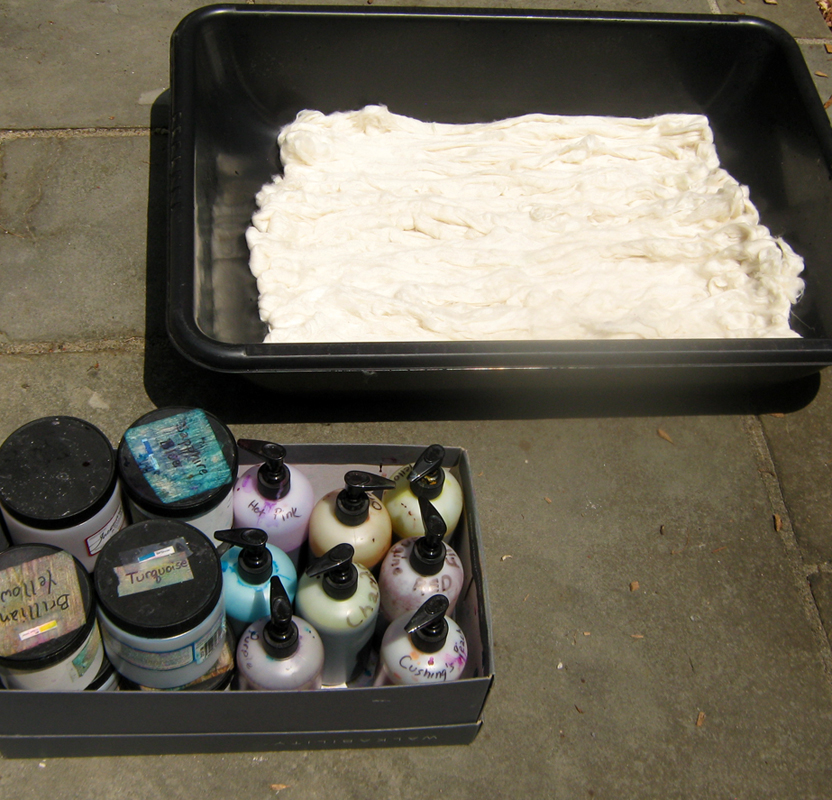
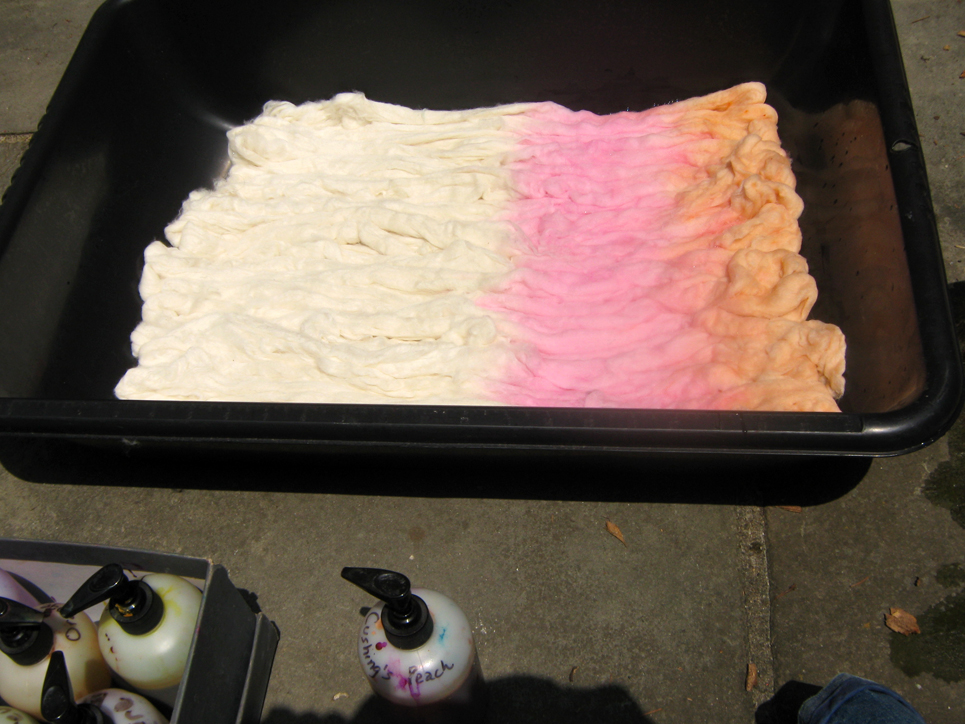

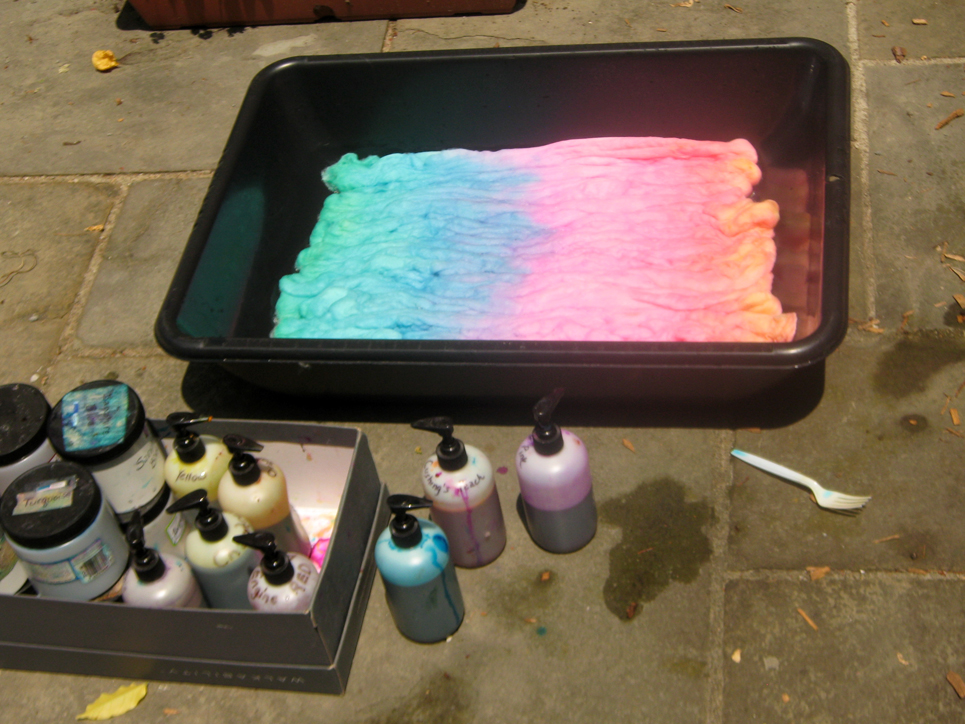
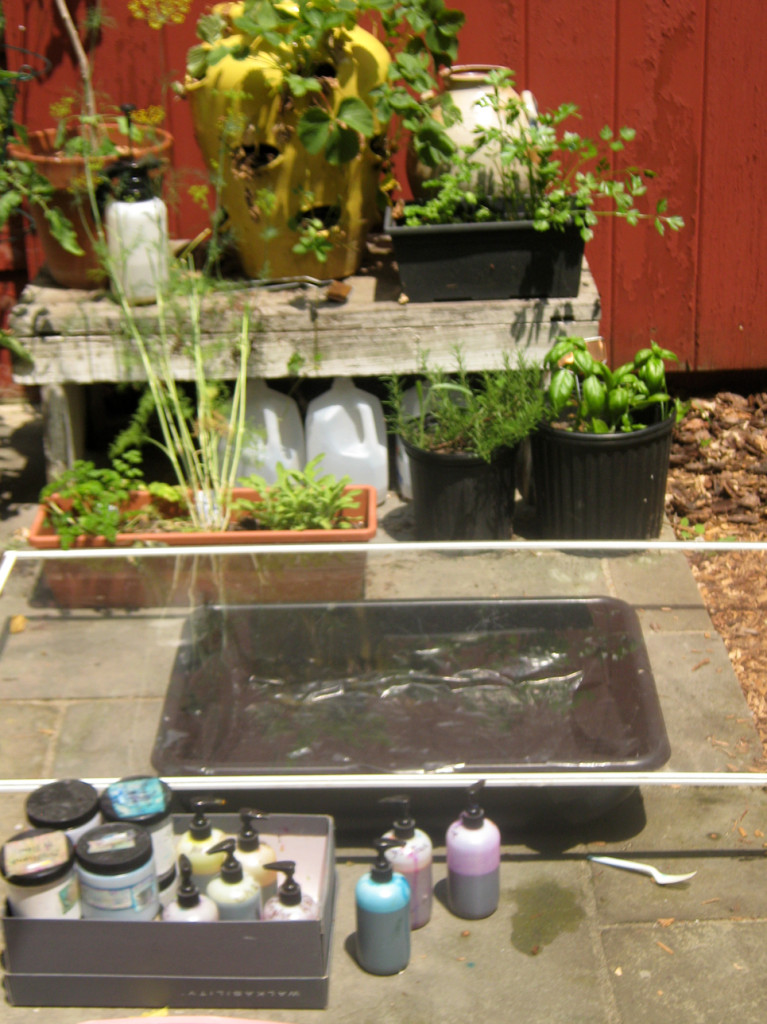
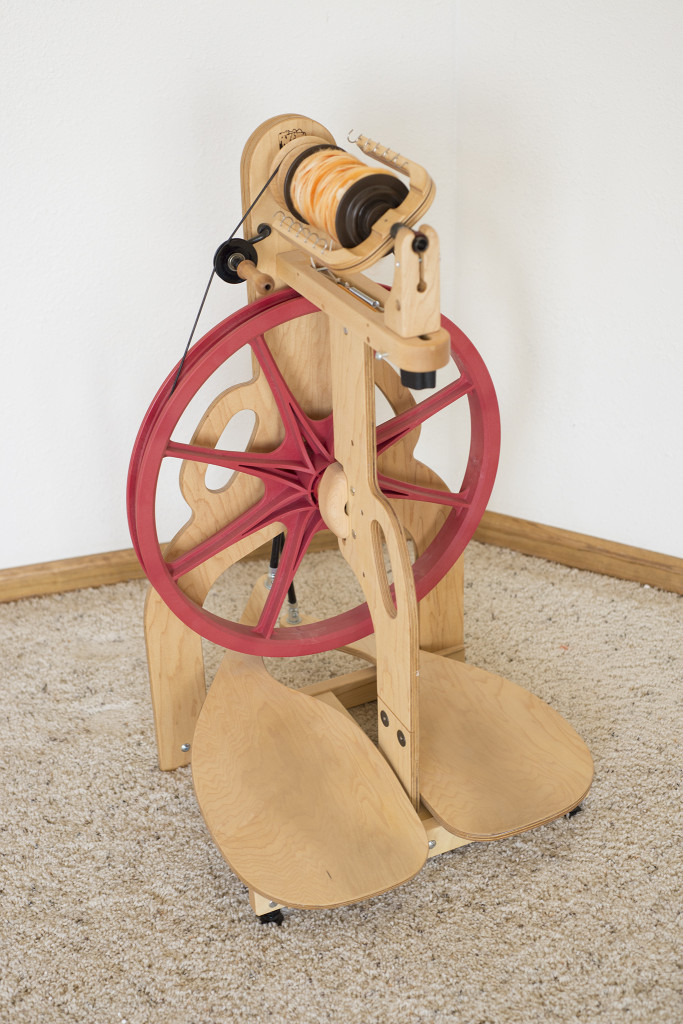
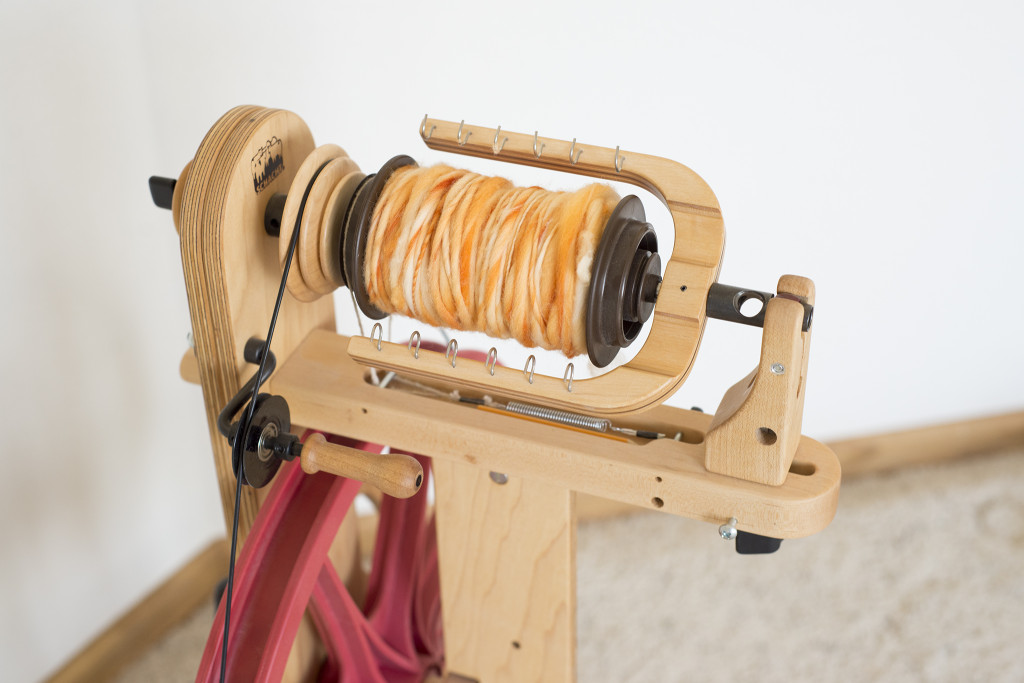
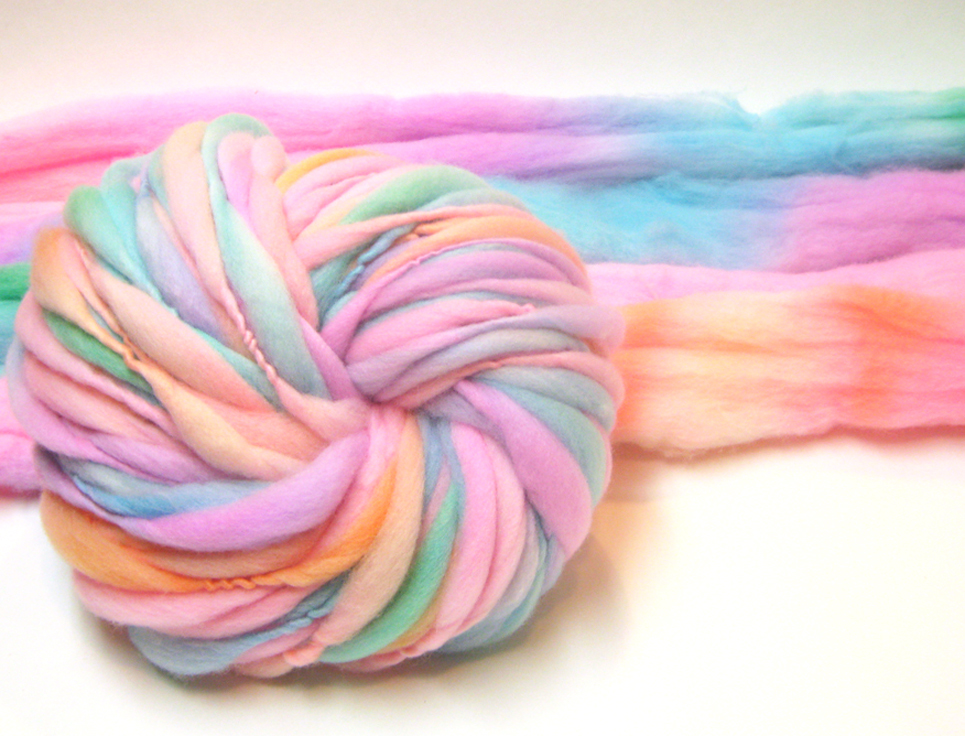
What a process she has to go through to get to the finished product. She has to love doing it. Really, with all she does to prepare the yarn it’s cost is very reasonable. The colors are beautiful! Thanks for sharing.
Wow, this was quite an interesting article. I never knew how much work was involved in creating such beautiful yarns. Thank you for sharing the article.
That’s amazing. I know it seems very time consuming, but the satistaction at the end knowing it has been produced by a loving touch and not the mechanical age is wonderful.
That is amazing!!! It is beautiful too!!!! Love it!!!!
What a lot of work and what a lot of talent too!!!!!
Wow !! I just saw the all the stages from the begining its sooo amazing !!
Hand dyeing yarn its soo crearive !!! Its a piece of art !!!
Isn’t it just!? And then we get to make another work of art using it. SO cool!
My first handspun was from The Gingko Leaf…LOVE her yarns!
I loved her video so much I just ordered some of her yarn to try. Can’t wait to get the order.
Awesome! You’ll love it 😉
Love the article … It is my dream to be able to dye and make my own yarn…
I instantly started drooling when I saw that BEAUTIFUL picture of the handspun yarn! I know how much time, effort and work going into making yummy yarn like that. I really wish that I had the time to give it a try myself. I really would love to try it. I have much respect to the people that do it, that’s for sure!!
I start drooling everytime I see Karla’s yarn too! She certainly is incredible at what she does!